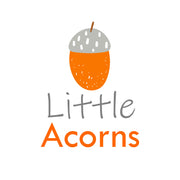
30 Days Wild Blog Day 19: Support your child's speech and language through nature play
You may have heard the expression “Play is a child’s work”. This means that there are so many skills children learn while playing. Here’s our top 3 nature-based activities:

1. Dino world
It’s so easy to create a small world set-up that sparks your child’s imagination. It doesn’t need to be expensive either! We created a mini Jurassic world with toy dinosaurs, rocks, grass cuttings and leaves gathered from our garden. You could also get a container of water, a brush and some water and pretend to wash the dinosaurs. Let your child play and see what they come up with. An open-ended play activity like this one, where there are no set ways to play, gives your child the freedom to play in whichever way they want. This is important for decision-making, problem solving and ‘out of the box’ thinking.
Top Tip:
Follow your child’s interests. If your child is not into dinosaurs, you could add in some fairies, woodland animals, mini diggers… and so much more! Children will play for longer when it is an activity they are interested in.

2. Mud cakes
Playing with mud is such a fun sensory experience for children and provides so many learning experiences. It’s great for fine motor skills development as your child scoops, pours, transfers and mixes their mud cakes. A fun activity is baking with mud. Children can develop their social and communication skills as they recreate real life scenarios and let their imagination run wild. It can be a great stepping stone to introducing your child to baking and cooking.
Go on a nature hunt to collect natural items to decorate your cakes. Provide buckets and other containers for your child to collect their ingredients. For older children, you could write a list of ingredients to encourage them to read and tick each one off or let your child have a go at writing their recipe by themselves.
Fresh flower petals, rocks, grass, sticks, leaves make great sprinkles. Sticks and bark can be used in the cake mix just like chocolate chips.
Ingredients:
- Mud
- Bark
- Flower petals
- Rocks
- Pebbles
- Sticks
- Grass
- Jug of water
- Empty containers
- Wooden spoon
- Whisk
- Muffin cases
- Measuring cups and spoons
Method:
Step 1: Pour 8 spoons of mud into a bowl
Step 2: Pour 1 cup of water into the bowl. Whisk together
Step 3: Add 2 tablespoons of broken sticks. Add 1 tablespoon of grass. Mix together
Step 4: Scoop the mixture into the cupcake cases
Step 5: Decorate with leaves
Top tip: When providing instructions for the cake, keep your language simple and break down instructions into smaller chunks.

3. Lion puppets
Puppets are incredibly versatile. They can be used with all ages and there are so many ways you can use them to build your child’s language skills. We made some cute lion puppets by sticking leaves and flowers onto a lollipop stick with some tape. Then, we drew a lion on a piece of cardboard and stuck it on the lollipop stick with some tape.
Ways to play:
- Practice storytelling by creating your own story or retelling a story or experience. Use the words ‘FIRST/THEN’ to help sequence events. ‘First the lion went to the park. Then he went swimming.’ For older children, it can be a great way to introduce the different components in a story - introduction, problem, solution, conclusion.
- For younger children, play Lion Says (similar to Simon Says) to get your child to learn about a range of action words. Action words are important for language development as they allow your child to start building early sentences. Swap roles and tell your puppet to act out different actions instead e.g Lion jump.
- Practice understanding prepositional language (in, on, under, next to, between etc.) by asking your child to follow directions appropriate for their age and stage of development e.g Put the Lion UNDER the table, Put the Lion ON the chair.
- If your child is struggling with a certain speech sound, have your puppet search for items around the house beginning with that sound. For example, if your child finds the ‘k’ sound tricky, your puppet could find the keys, toy car, toy cow, their coat etc.
Happy Playing!
